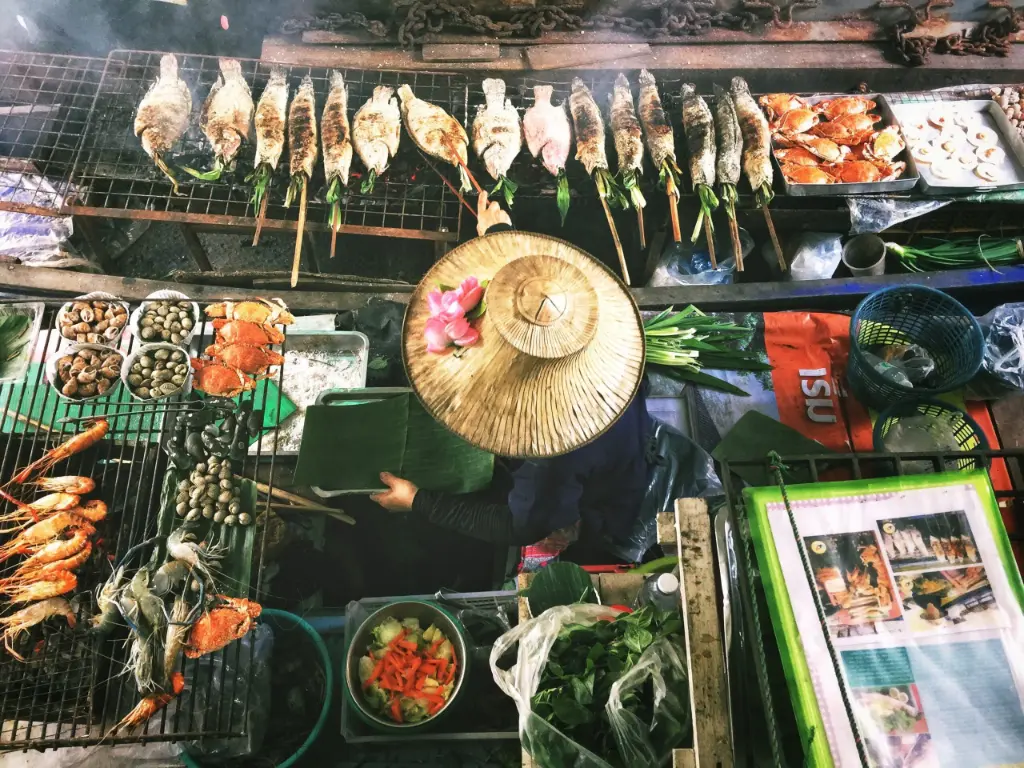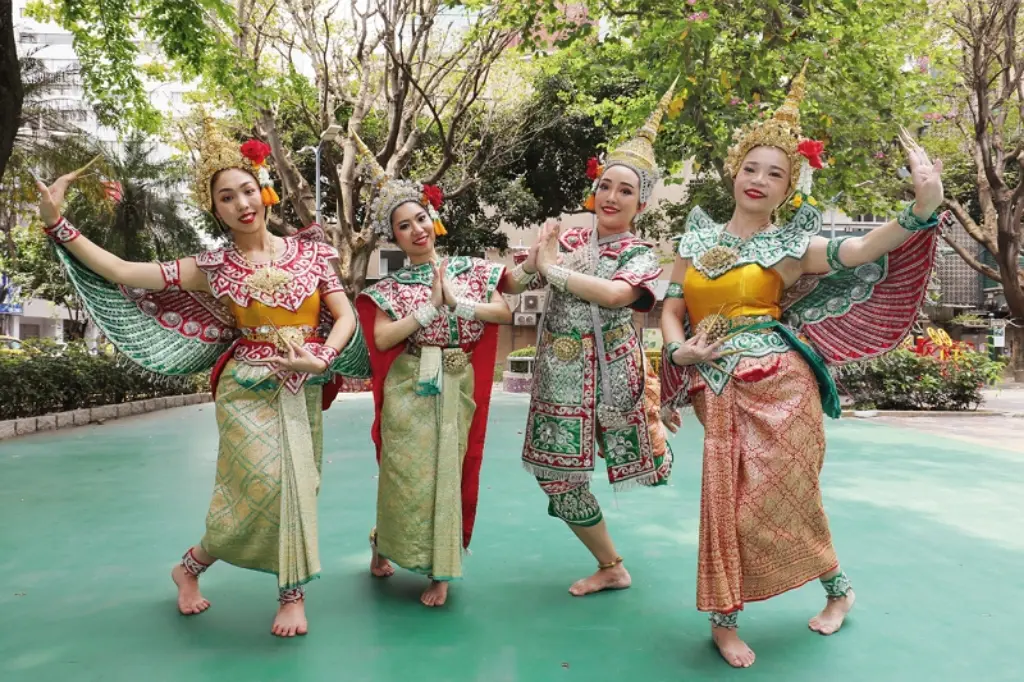Thai culture, with its vibrant traditions and unique practices, is experiencing a surge in global popularity. From the tantalizing aromas of its cuisine to the holistic approach of its wellness philosophies, Thailand is captivating hearts and minds worldwide. This article explores the key drivers behind this cultural phenomenon, focusing on the growing influence of Thai food, wellness practices, and other captivating aspects of Thai culture.
The Global Love Affair with Thai Cuisine
Thai food, with its harmonious blend of sweet, sour, salty, and spicy flavors, has become a staple in many countries. This isn’t just about the taste, though; it’s also about the experience. The use of fresh ingredients, the meticulous preparation, and the communal way of sharing meals are all key components of the appeal. Let’s delve deeper into the reasons behind this culinary triumph.

The Allure of Unique Flavors and Fresh Ingredients
Thai cooking is characterized by its use of aromatic herbs and spices like lemongrass, galangal, chili, and basil. These ingredients not only contribute to the distinct flavor profiles but also offer potential health benefits. The emphasis on fresh, locally sourced produce further enhances the eating experience. This commitment to freshness and authenticity makes Thai dishes incredibly flavorful and vibrant.
- Key Ingredients: Lemongrass, galangal, kaffir lime leaves, fish sauce, coconut milk
- Flavor Balance: The interplay of sweet, sour, salty, and spicy is central to Thai cooking.
- Health Aspect: Fresh herbs and spices contribute potential health benefits.
Popular Thai Dishes Driving Global Demand
Certain Thai dishes have gained international acclaim, acting as ambassadors for the cuisine. These dishes, widely available in restaurants and increasingly made at home, are a testament to the versatility and appeal of Thai food. Considered both comforting and exotic, they offer something for everyone.
See also The Role of Japanese Anime in Popularizing Asian Culture Globally
The Role of Japanese Anime in Popularizing Asian Culture GloballySome of the most beloved dishes include:
- Pad Thai: Stir-fried rice noodles with tofu, shrimp, peanuts, and tamarind sauce.
- Green Curry: A fragrant curry made with green chilies, coconut milk, vegetables, and meat or tofu.
- Tom Yum Soup: A spicy and sour soup flavored with lemongrass, galangal, and lime.
- Massaman Curry: A rich and mild curry with influences from Indian cuisine.
Thai Cooking Classes and the Home Chef
The popularity of Thai food has also fueled an increase in cooking classes and recipe resources. More people are seeking to recreate their favorite Thai dishes at home, embracing not just the recipes but also the cultural context behind them. This hands-on approach allows for a deeper appreciation of Thai cuisine.
The availability of authentic ingredients in most major cities is further driving this trend. From local Asian markets to online stores, accessing the essential items for Thai cooking has never been easier, enabling more people to engage directly with this culinary tradition.
Thai Wellness Practices: A Holistic Approach
Beyond food, Thai culture offers a wealth of wellness practices that are gaining international attention. These practices, often rooted in ancient traditions, emphasize the importance of balance and harmony for overall well-being. Let’s explore the key elements that are drawing people to these holistic approaches.
See also The Worldwide Fascination with Moroccan Art Design and Cuisine
The Worldwide Fascination with Moroccan Art Design and Cuisine
Traditional Thai Massage: More Than Just a Massage
Traditional Thai massage, or Nuad Thai, is a unique system that combines acupressure, assisted yoga postures, and gentle stretching. Unlike Western massage techniques, it focuses on energy lines within the body. It aims to release tension, improve circulation, and promote a sense of calm. This holistic approach distinguishes it from other forms of massage therapy. Its growing popularity is a testament to its effectiveness and relaxing nature.
- Energy Lines: The practice focuses on specific energy channels (Sen) in the body.
- Assisted Yoga: Includes gentle stretches and yoga-like postures.
- Holistic Approach: Aims to improve overall health and well-being.
Thai Herbal Medicine: Natural Healing
Thai herbal medicine utilizes a wide range of plants, roots, and herbs to treat ailments and promote well-being. This traditional system views health as a balance of elements within the body. Many of these remedies are now gaining recognition and scientific interest. From soothing teas to potent balms, herbal medicine is a cornerstone of Thai wellness.
Key components include:
- Diverse Herbs: Utilization of a vast range of local herbs and plants.
- Holistic Approach: Emphasis on balancing the body’s natural elements.
- Traditional Knowledge: Based on centuries-old practices and understanding.
Meditation and Mindfulness: The Influence of Buddhism
Buddhism, deeply ingrained in Thai culture, places significant emphasis on mindfulness and meditation. These practices, increasingly recognized for their mental and physical health benefits, are attracting a global following. The focus on present moment awareness and inner peace is appealing to many seeking respite from the stresses of modern life. Meditation centers and retreats in Thailand are attracting a growing number of international visitors.
Elements of this include:
- Mindfulness: Emphasis on present moment awareness.
- Meditation Techniques: Various forms of meditation including Vipassana.
- Mental Wellness: Focus on reducing stress and improving mental clarity.
Beyond Food and Wellness: Other Facets of Thai Culture
The allure of Thai culture extends beyond its cuisine and wellness practices. The rich traditions, vibrant arts, and welcoming spirit of the Thai people are also captivating global audiences. Let’s look at some additional aspects contributing to this cultural surge.

The Beauty of Thai Arts and Crafts
Thai art, renowned for its intricate details and vibrant colors, is a feast for the eyes. From traditional temple architecture to elaborate textiles and handicrafts, Thai artistry reflects a rich cultural heritage. These works are not only visually stunning but also imbued with symbolic meanings. The popularity of Thai art and crafts worldwide showcases the skill and creativity of Thai artisans.
Examples of this beauty include:
- Temple Architecture: Elaborate designs and gold leaf embellishments.
- Textiles: Silk weaving, batik, and other forms of textile art.
- Handicrafts: Intricately carved wood, ceramics, and other crafts.
Festivals and Celebrations: A Vibrant Display of Culture
Thailand is known for its numerous festivals and celebrations, each offering a unique glimpse into the country’s rich cultural heritage. These events, often marked by vibrant parades, traditional music, and elaborate costumes, attract both locals and tourists alike. These festive occasions provide a colorful and engaging way to experience Thai traditions firsthand.
Some notable festivals include:
- Songkran: The Thai New Year, celebrated with water fights and cleansing rituals.
- Loy Krathong: A festival of lights, where people float decorated lanterns on rivers and lakes.
- Yi Peng: A spectacular lantern festival in Northern Thailand.
The Warmth of Thai Hospitality
Beyond the tangible aspects of culture, the warmth and hospitality of the Thai people play a significant role in its global appeal. Known as “the land of smiles,” Thailand is recognized for its welcoming and friendly atmosphere. This genuine hospitality contributes to the positive experiences of visitors, encouraging them to return and share their positive impressions. This cultural warmth leaves a lasting impact on those who encounter it.
The Future of Thai Cultural Influence
The rising popularity of Thai culture is not a passing fad but a sustained movement. As people increasingly seek authentic and holistic experiences, Thai cuisine, wellness practices, and cultural traditions are poised to continue their global ascent. This trend is further supported by increased tourism, a growing awareness of Thai culture through media and the internet, and a global shift towards appreciation of diverse cultures.
Sustained Interest in Authentic Experiences
In an increasingly globalized world, many are seeking genuine cultural experiences. Thai culture, with its deep-rooted traditions and unique approaches, is particularly appealing to those looking for authenticity. This desire for genuine interactions will likely further fuel the interest in Thai culture.
Increased Accessibility and Exposure
Thanks to the internet, social media, and tourism, Thai culture is more accessible than ever before. This increased exposure allows people from all corners of the world to engage with Thai traditions, learn about its history, and embrace its practices. This heightened awareness is projected to further increase its global popularity.
Positive Cultural Exchange and Global Understanding
The growth of Thai cultural influence has the potential to foster cross-cultural understanding and appreciation. By engaging with Thai traditions, people gain insight into different ways of life, which can broaden perspectives and promote a more connected world. This positive exchange can lead to a better understanding and appreciation for the diversity of human experience.
The rising popularity of Thai culture, spanning its cuisine, wellness practices, and artistic traditions, reflects a global shift towards embracing authenticity, holistic approaches, and diverse perspectives. The rich tapestry of Thai culture, with its flavors, practices, and warmth, has resonated with people worldwide.
As this trend continues, the influence of Thailand will continue to shape global culture and enrich our lives with its unique contributions. The journey of discovery into Thai culture is one that offers continuous value and fascination.“`




